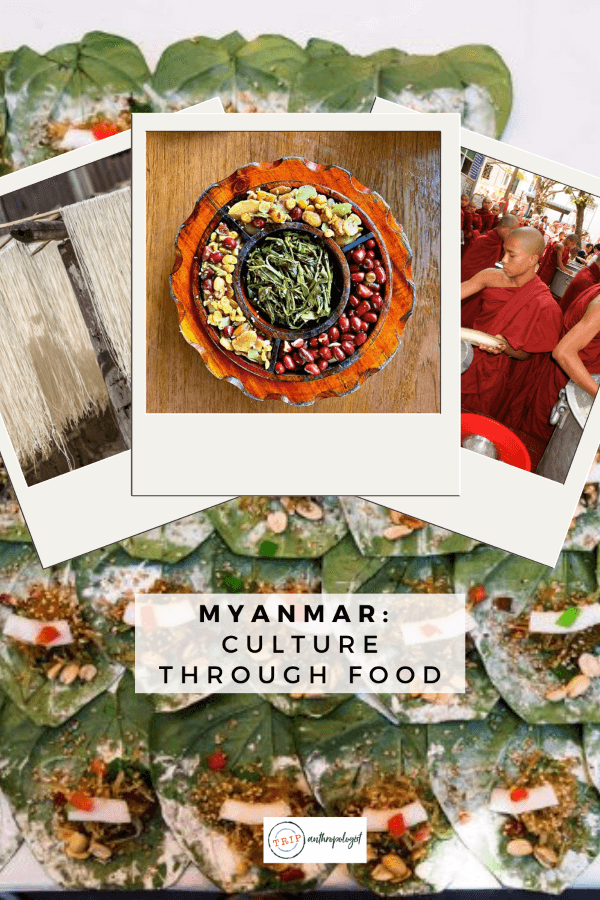India And Myanmar Celebrate Shared Heritage Through Food

Table of Contents
Shared Ingredients: The Building Blocks of a Common Cuisine
The foundation of the similar tastes found in Indian and Myanmar cuisine lies in the shared use of essential ingredients. These common elements form the aromatic and flavorful base of many dishes, highlighting a deeply connected culinary history.
Spices – The Aromatic Heart of Both Cuisines
Spices are the lifeblood of both Indian and Myanmar cooking. Turmeric, chili, cumin, coriander, and ginger are ubiquitous, lending their distinctive flavors and aromas to a vast array of dishes.
- India: Turmeric features prominently in curries like Chicken Tikka Masala and vegetable preparations. Chili's heat levels vary regionally, influencing the intensity of curries and side dishes. Cumin and coriander are essential in many spice blends, forming the base for numerous dishes.
- Myanmar: Turmeric is a key ingredient in Ohno Khauk Swe (coconut milk noodle soup), adding its signature golden hue and earthy flavor. Chili features heavily in Mohinga, Myanmar's national dish, offering a fiery kick. Cumin and coriander are found in many curry pastes, contributing to their complex flavor profiles.
The historical context is crucial. Ancient spice trade routes, connecting India with Southeast Asia, facilitated the exchange of these aromatic treasures, profoundly influencing the culinary landscapes of both regions.
Rice & Grains – The Staple Food
Rice is undeniably the staple food in both India and Myanmar, forming the basis of countless meals. The varieties cultivated and the methods of preparation showcase a shared culinary foundation.
- India: Basmati rice, known for its delicate aroma and fluffy texture, is favored in many regions. Other varieties, like Sona Masuri, are used in various dishes. Rice is served as an accompaniment to curries and other main courses.
- Myanmar: Several rice varieties are grown and consumed, each lending unique characteristics to dishes. Rice is the cornerstone of many traditional Myanmar meals, forming the base of dishes like Ohno Khauk Swe and various rice salads.
Beyond rice, lentils (dal) are a significant part of both cuisines, offering protein and diverse flavors in various stews and preparations.
Vegetables & Fruits – Seasonal Abundance
The abundance of fresh, seasonal produce further unites Indian and Myanmar cuisine. The shared geography and climate contribute to a similar palette of ingredients.
- India: A wide range of vegetables like eggplant, okra, spinach, and potatoes find their way into curries, stir-fries, and other preparations. Mangoes, bananas, and other fruits are used in both savory and sweet dishes.
- Myanmar: Similar vegetables are extensively used in Myanmar cuisine. The use of fresh herbs like cilantro and mint is common. Fruits like mangoes, pineapples, and papayas are frequently incorporated into desserts and salads.
The availability of these ingredients, dictated by the seasons, further highlights the commonalities between these culinary traditions.
Iconic Dishes: Tracing Culinary Similarities
Beyond shared ingredients, the similarities extend to iconic dishes, showcasing a remarkable confluence of flavors and techniques.
Curries – A Flavorful Fusion
Curries, a cornerstone of both cuisines, showcase variations on a common theme. While specific recipes differ, the fundamental techniques and the use of shared spices create a recognizable family resemblance.
- India: The vast diversity of Indian curries is well-known, encompassing creamy coconut-based curries, fiery tomato-based curries, and lentil-based dals.
- Myanmar: Myanmar curries often feature coconut milk, lemongrass, and galangal, creating rich and aromatic dishes. Many curries are served with rice or noodles.
The techniques involved in making these curries, including the use of spice pastes and slow cooking methods, are remarkably similar.
Noodles & Soups – A Comforting Connection
Noodles and soups occupy a significant place in the culinary landscape of both India and Myanmar, offering comforting and flavorful meals.
- India: Noodle dishes vary widely across India, with variations using wheat, rice, or other flours. Soups are common, often featuring lentils or vegetables.
- Myanmar: Ohno Khauk Swe, a popular noodle soup with coconut milk and turmeric, exemplifies the shared culinary heritage.
The use of similar ingredients and preparation techniques clearly points towards shared influences.
Sweets & Desserts – A Sweet Symphony
The sweet tooth is equally satisfied in both India and Myanmar, where a variety of desserts share a common thread.
- India: From rich milk-based sweets like rasgulla to flaky pastries like jalebi, Indian desserts are diverse and delightful.
- Myanmar: Sweet treats often incorporate coconut milk, palm sugar, and rice flour, showcasing a unique blend of flavors.
The similarities in ingredients and techniques further strengthen the shared culinary heritage.
The Impact of Trade Routes and Cultural Exchange
The profound culinary similarities between India and Myanmar are a direct result of centuries of trade and cultural exchange.
Historical Connections: A Culinary Tapestry
The ancient trade routes, connecting India with Southeast Asia, played a pivotal role in shaping the cuisines of both regions.
- The Silk Road and other trade routes facilitated the movement of goods, spices, and people, leading to a significant exchange of culinary ideas and techniques. This interaction spanned several centuries.
The movement of people and the sharing of recipes created a vibrant culinary tapestry.
Modern Influences: A Continuing Culinary Dialogue
The culinary exchange continues to evolve in the modern era, with new influences and adaptations.
- Fusion cuisine, drawing on elements from both culinary traditions, is gaining popularity. The increased interaction between the two countries fuels further innovation.
The ongoing culinary dialogue between India and Myanmar continues to enrich and diversify the culinary landscapes of both nations.
Conclusion
The shared culinary heritage of India and Myanmar is a testament to centuries of cultural exchange and intertwined histories. From the common ingredients and iconic dishes to the enduring impact of trade routes, the culinary connections between these two nations are undeniable. Dive deeper into the fascinating world of India Myanmar Shared Culinary Heritage and discover the rich history and flavors that connect these two vibrant nations. Explore the recipes, explore the culture, and savor the delicious connections!

Featured Posts
-
 Ongoing Nightmare The Plight Of Families With Hostages In Gaza
May 13, 2025
Ongoing Nightmare The Plight Of Families With Hostages In Gaza
May 13, 2025 -
 Pegula Falls To Sabalenka In Miami Open Final
May 13, 2025
Pegula Falls To Sabalenka In Miami Open Final
May 13, 2025 -
 Sabalenka Claims 19th Wta Title Beats Pegula In Miami
May 13, 2025
Sabalenka Claims 19th Wta Title Beats Pegula In Miami
May 13, 2025 -
 Megan Thee Stallions Request For Sanctions After Tory Lanez Deposition
May 13, 2025
Megan Thee Stallions Request For Sanctions After Tory Lanez Deposition
May 13, 2025 -
 When Does Doom The Dark Ages Early Access Start Release Date Guide
May 13, 2025
When Does Doom The Dark Ages Early Access Start Release Date Guide
May 13, 2025
